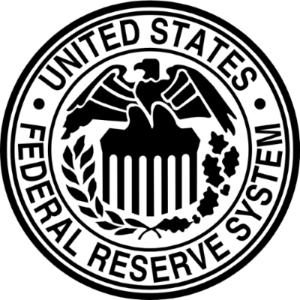Articles
Posted on September 20, 2017
No Fed Rate Hike Today, But Will Begin Shrinking Balance Sheet Next Month
 While the Fed policymakers left rates unchanged today, as expected, they signalled that there would be one more rate hike this year and three next year. At least one Federal Reserve policymaker has joined Jim Bullard, President of the St. Louis Fed and the resident inflation dove, in predicting no rate hikes next year; but the median forecast of Fed decision makers expect one more move this year and three rate hikes next year. The Fed revised down its median estimate of core inflation to 1.5% from 1.7% this year while raising its median projection for economic growth this year to 2.4% from 2.2%. Their long-run growth forecast for the U.S. economy was unchanged at 1.8%, which is similar to the Bank of Canada’s estimate as well.
While the Fed policymakers left rates unchanged today, as expected, they signalled that there would be one more rate hike this year and three next year. At least one Federal Reserve policymaker has joined Jim Bullard, President of the St. Louis Fed and the resident inflation dove, in predicting no rate hikes next year; but the median forecast of Fed decision makers expect one more move this year and three rate hikes next year. The Fed revised down its median estimate of core inflation to 1.5% from 1.7% this year while raising its median projection for economic growth this year to 2.4% from 2.2%. Their long-run growth forecast for the U.S. economy was unchanged at 1.8%, which is similar to the Bank of Canada’s estimate as well.
Fed policymakers also lowered their long-run estimate for a ‘neutral’ federal funds rate–the rate at which supply and demand are in the balance–to a median of 2.75% from 3% in the June projections. The benchmark overnight rate is currently in a range of 1% to 1.25%, up considerably from its lows of 0% to 0.25% before the Fed began tightening in December 2015.
The U.S. central bankers are counting on steady growth and low unemployment to raise inflation closer to their goal of 2%, which supports their policy of gradual tightening through interest-rate increases and reversal of quantitative easing. The Fed has consistently overestimated the outlook for inflation for an extended period.
Fed officials held steady their estimate of the noninflationary level of unemployment at 4.6% while lowering their projections of the jobless rate in 2018 and 2019 to 4.1%. The U.S. unemployment rate currently stands at 4.4%, and labour shortages are emerging despite a continued low level of labour force participation in prime-age workers, especially men.
The Fed’s decision to set the first balance sheet roll-off of maturing bonds for October is in line with expectation. The shrinking of the balance sheet will follow the framework released in June: $6 billion in Treasuries and $4 billion in mortgage-backed securities per month, rising every three months until the amounts reach $30 billion in Treasury bonds and $20 billion per month in mortgage-backed securities. The Fed will adjust this path if needed depending on market reaction and incoming economic data. The central bank expects to end the runoff of bonds at some point but has not specified when.
The Bank of Japan and the European Central Bank also conducted quantitative easing, but the Fed is the first to begin to reverse the policy. Central bank bond sales reduce market liquidity and tighten credit conditions. How much upward pressure this will put on borrowing rates is unknown so the Fed will be gradual and cautious in tightening credit conditions.
The Bank of Canada did not conduct quantitative easing, as the recession in Canada induced by the financial crisis was comparatively short and mild. But the Bank has already raised the overnight benchmark rate twice to a level of 1.0%, and with the backdrop of Fed tightening, the Bank has signalled this week that it will be more measured in further rate hikes. As always, the Bank will consider incoming evidence of the state of the Canadian, U.S. and global economy.
OSFI Proposal In this Environment
We can only hope that the financial regulator in Canada, OSFI, will also be cautious and measured in its actions to tighten the housing market. OSFI announced in July that it proposes to further reduce mortgage activity by requiring that borrowers with more than a 20% down payment qualify at two percentage points above the contracted mortgage rate. This swath of borrowers is typically move-up buyers with large down payments, which reportedly represent up to 80% of housing activity. So this action in the wake of already-rising mortgage rates could arguably be more significant that past measures. The OSFI proposal could well be destabilizing at a time when the housing market in Toronto is already slowing. Given how important housing has been to the Canadian economy, such an aggressive move may be piling on too much to the myriad tightening efforts already put in place by regulators, the federal and provincial governments of B.C. and Ontario.